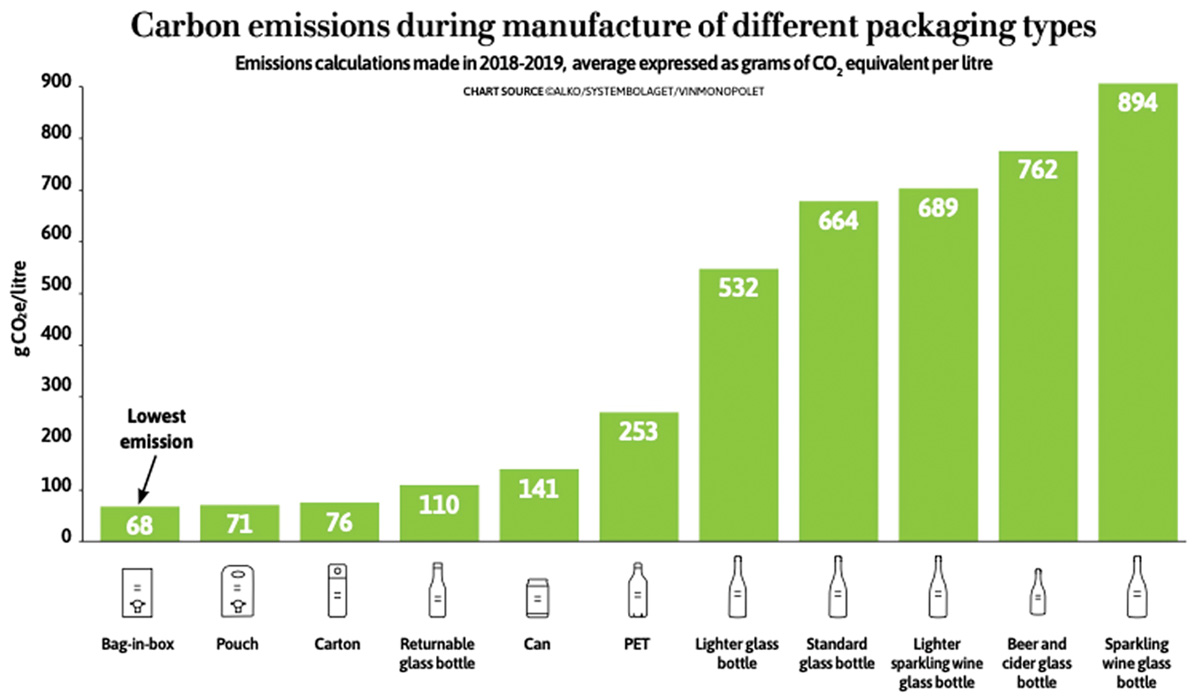A Thousand Gods
I like to think that when Simon Sharpe and Lauren Keenan heard they'd been named The Real Review Rising Star of the Year, they cried out "miladiou!"
Glass bottles have overwhelmingly been the packaging of choice for winemakers since large-scale production started in the 17th century.
The glass bottle is intertwined with the image and tradition of wine, and there are many things to love, including its strength and inherent properties, which protect wine from oxygen while still allowing it to age.
But 400 years on from that transformation, the environmental impact of single-use glass bottles is a concern, and many New Zealand wine companies have adopted low-weight bottles to reduce their carbon emissions. Meanwhile, alternative packaging formats such as bag-in-box, aluminium cans, Tetra-style packs, paper bottles, and wines on-tap from keg, provide an opportunity to reduce this footprint further. Many of these alternatives also can be adapted to smaller serving sizes, offering consumers greater choice and promoting moderate drinking.
Lifecycle assessment (LCA) studies examine the environmental impact of all stages of wine production, including vineyard, winemaking, packaging and distribution, and disposal. LCAs overwhelmingly show glass bottles are the single biggest contributor to a wine's carbon footprint. A review of all current wine LCAs studies published in the Journal of Sustainability concluded the bottling and packaging phase contributes 40-90% of wine's carbon emissions, depending on bottle weight and transport. The average carbon footprint of a bottle of wine can vary, but most recent studies show it sits at about 1.25kg CO2e (carbon dioxide equivalent*) and the majority of this is attributed to the glass bottle. This is due to the intensive energy and heat required for the glass melting process, in addition to the CO2 released as a result of the decomposition of carbonates during glass production.
One of the benefits of glass packaging is its infinite recyclability, and the Glass Alliance has shown these emissions can be decreased with the inclusion of recycled content. But with each 10% increase in recycled glass content, CO2 emissions are only reduced by 2%. According to the Packaging Forum, 71% of all glass in the New Zealand market is recycled, while 14% goes to roading, 6% is stockpiled, and 7% heads to landfill.
Globally, the discussion around the environmental benefits of packing alternatives for wine is gaining momentum. A United Kingdom-based group, the Wine Traders for Alternative Formats (WTAF), have a live count of the carbon footprint of single-use glass wine bottles in the UK so far this year – at last check, it was 1,263,579,700 kgCO2e. In 2022 the group penned an open letter signed by some of the leading UK wine writers, including Jancis Robinson and Hugh Johnson, calling for a shift to alternative packaging for wine. The letter claims a switch from glass to alternative formats could save as much as 750,000,000 kgCO2e of emissions every year in the UK alone. This is the equivalent of taking 350,000 cars off the road overnight and equates to well over a third of the carbon footprint of wine consumed in the UK.
 |
|---|
|
|
A study commissioned by the alcohol monopolies of Sweden, Finland and Norway compared the CO2 emissions of different wine packaging, and the results were pretty stark. Heavy glass bottles have by far the highest carbon impact. PET (polyethylene terephthalate) bottles and cans had less than half the carbon footprint of even the lightest glass, with bag-in-box having the lowest overall emissions per litre.
The Wine Society (UK) released a study in May this year that explored the environmental performance of various packaging formats that could provide an alternative to single-use glass bottles. They chose six packing formats – bag-in-box, beverage carton (Tetra Pak style), aluminium can, paper bottle, pouch, and recycled PET, and then reviewed their impacts on the environment, wine quality, consumer attitudes, and recyclability. They found bag-in-box and recycled PET bottles had the best potential for carbon emission savings and advantages for consumers.
Alternative options are not the only way to reduce the carbon footprint of wine packaging. Lightweight bottles combined with shipping in bulk and bottling in market can have a significant impact. An LCA conducted by the Australian Wine Research Institute showed using lightweight bottles (330g compared to 500g) can reduce the overall LCA impact of wine by 18%. And the New Zealand Winegrowers 2022 Sustainability Report states 55% of wineries are using lightweight bottles as one of their methods of packaging.
Although no non-glass packaging is the perfect solution, the overwhelming environmental benefits, improved convenience, and increased options for serving size have now made alternative packaging a viable option.
The large 2025 harvest will exacerbate the wine industry's "lingering" supply from recent vintages, New Zealand Winegrowers Chief Executive Philip…
If you find a new consumer in a developed wine market, you are taking them from someone else, says Blank…
OPINION: Sauvignon Blanc was famously introduced to New Zealand by Ross Spence of Matua Valley, and then serendipitously planted in…